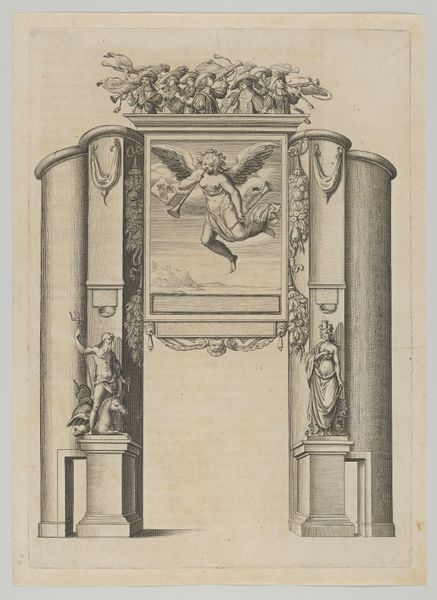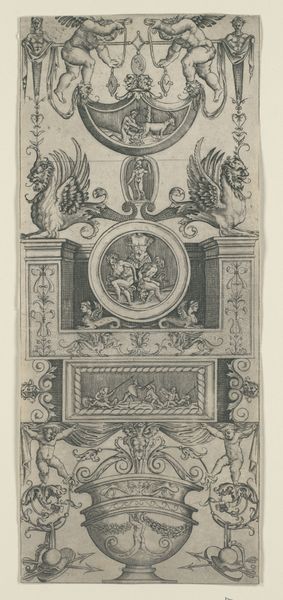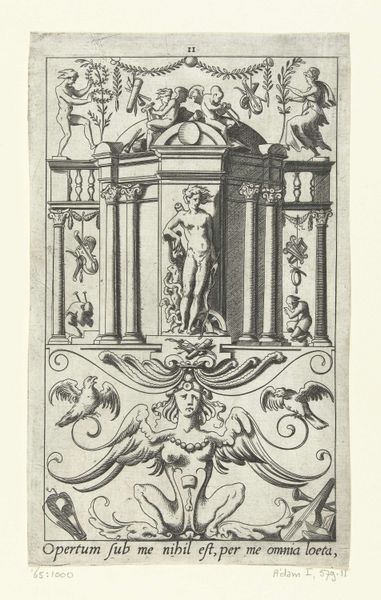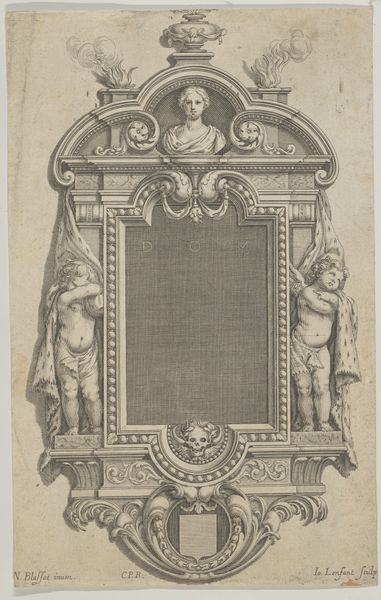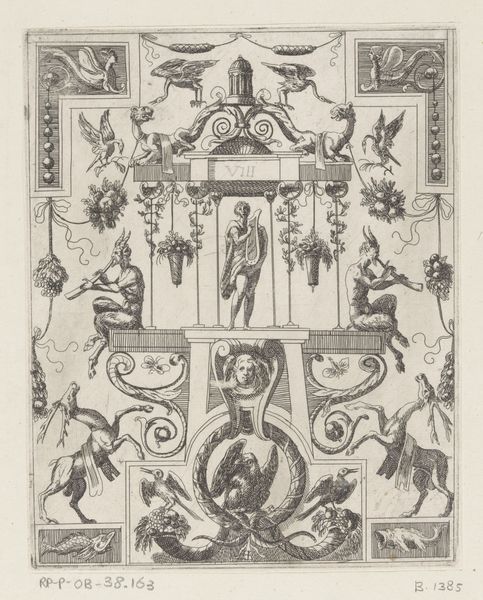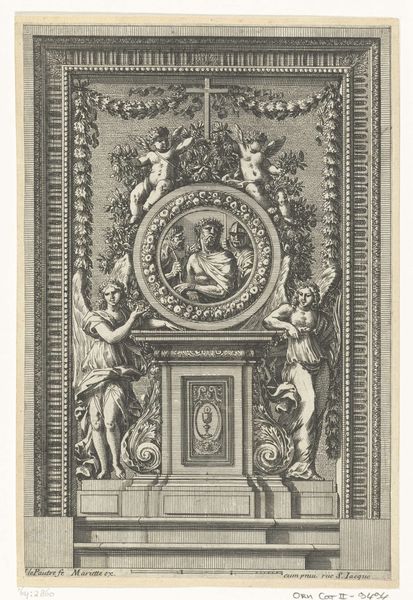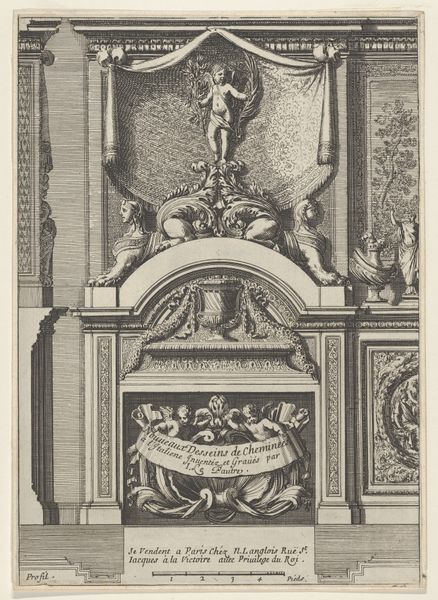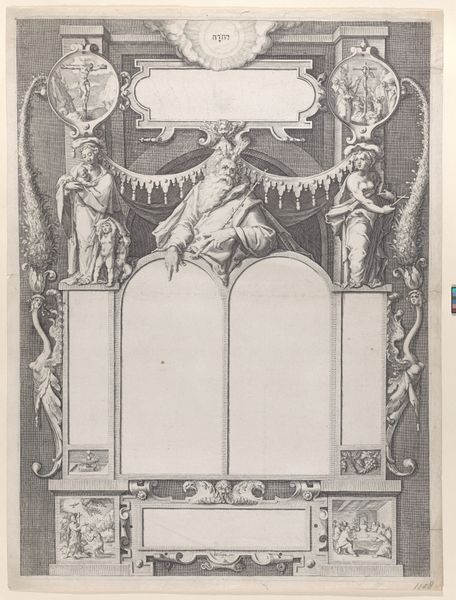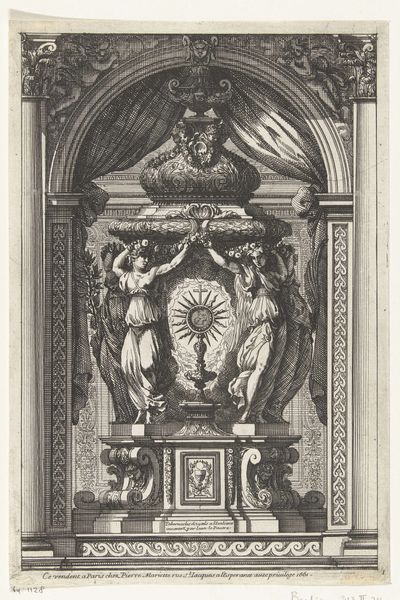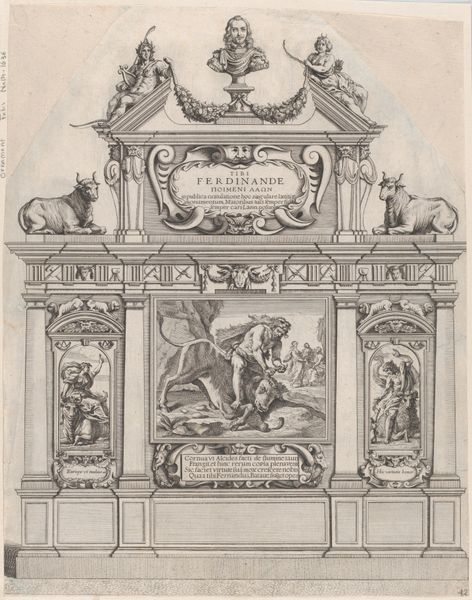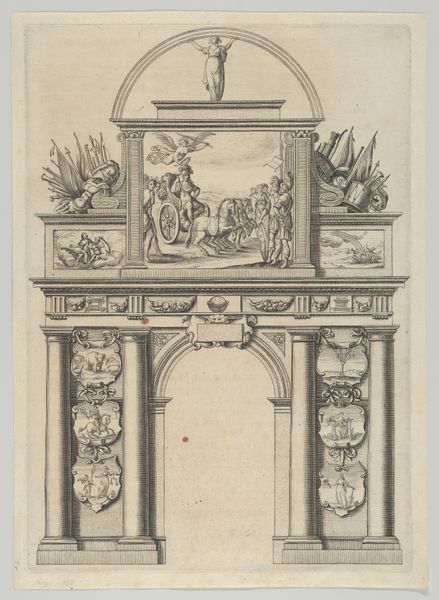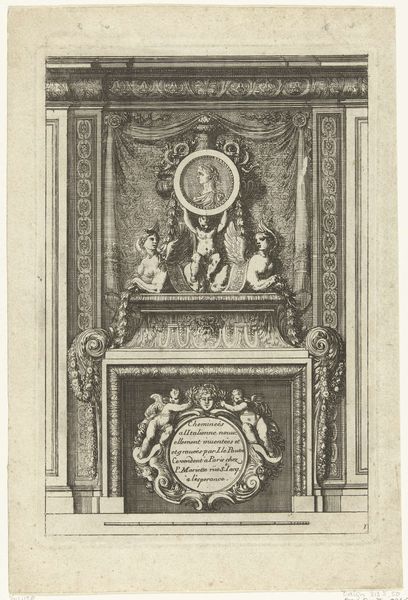
print, engraving
#
allegory
#
baroque
# print
#
figuration
#
form
#
line
#
history-painting
#
engraving
Dimensions: height 185 mm, width 155 mm
Copyright: Rijks Museum: Open Domain
Editor: This engraving by Matthäus Merian, titled "Blanco titelprent met een allegorie op het geweten" and dating from the early to mid-17th century, strikes me as carefully constructed. The symmetry, with the blank space framed by allegorical figures, is really compelling. What do you see as the most important compositional elements at play here? Curator: I'm drawn to the dialectical composition; Merian orchestrates a visual language centered around opposition. Notice the symmetry bifurcated by the central void, and the dual figures acting as both structure and symbolic weight, respectively representing "good" and "bad" conscience. This invites us to contemplate the very nature of the engraving's inherent structure as the groundwork of its allegorical content. Editor: So you see the visual structure mirroring the theme of conscience? The balance between the two sides, it feels like, is almost unsettlingly even. Curator: Precisely. Consider how the Baroque aesthetic, often characterized by dynamism and tension, is here contained within a rigidly formal framework. This interplay creates a space for the viewer to engage in semiotic decryption. How do these stylistic elements interact with the iconographic program? Editor: That's interesting. I hadn't thought about how the period style itself contributes to the meaning. It's more than just decoration, it's part of the statement. Curator: Indeed. Further examine the use of line – its quality, density, and direction. Consider, does it produce stark oppositions between the figures of Conscience, or create nuance that suggest common ground between good and bad? It appears to me that these stylistic choices lead the viewer to an introspective inquiry of moral awareness rather than a binary assessment. Editor: Looking closer, I can see the lines aren't so different on either side, good or bad. That symmetry is key. Curator: What does it tell you to look past immediate moral judgment? Editor: It challenges us to consider the complexities, perhaps, of our inner selves. Thank you for the in-depth insight; you have taught me so much in such a short time! Curator: You are very welcome. I hope I provided some interesting concepts to mull over.
Comments
No comments
Be the first to comment and join the conversation on the ultimate creative platform.
